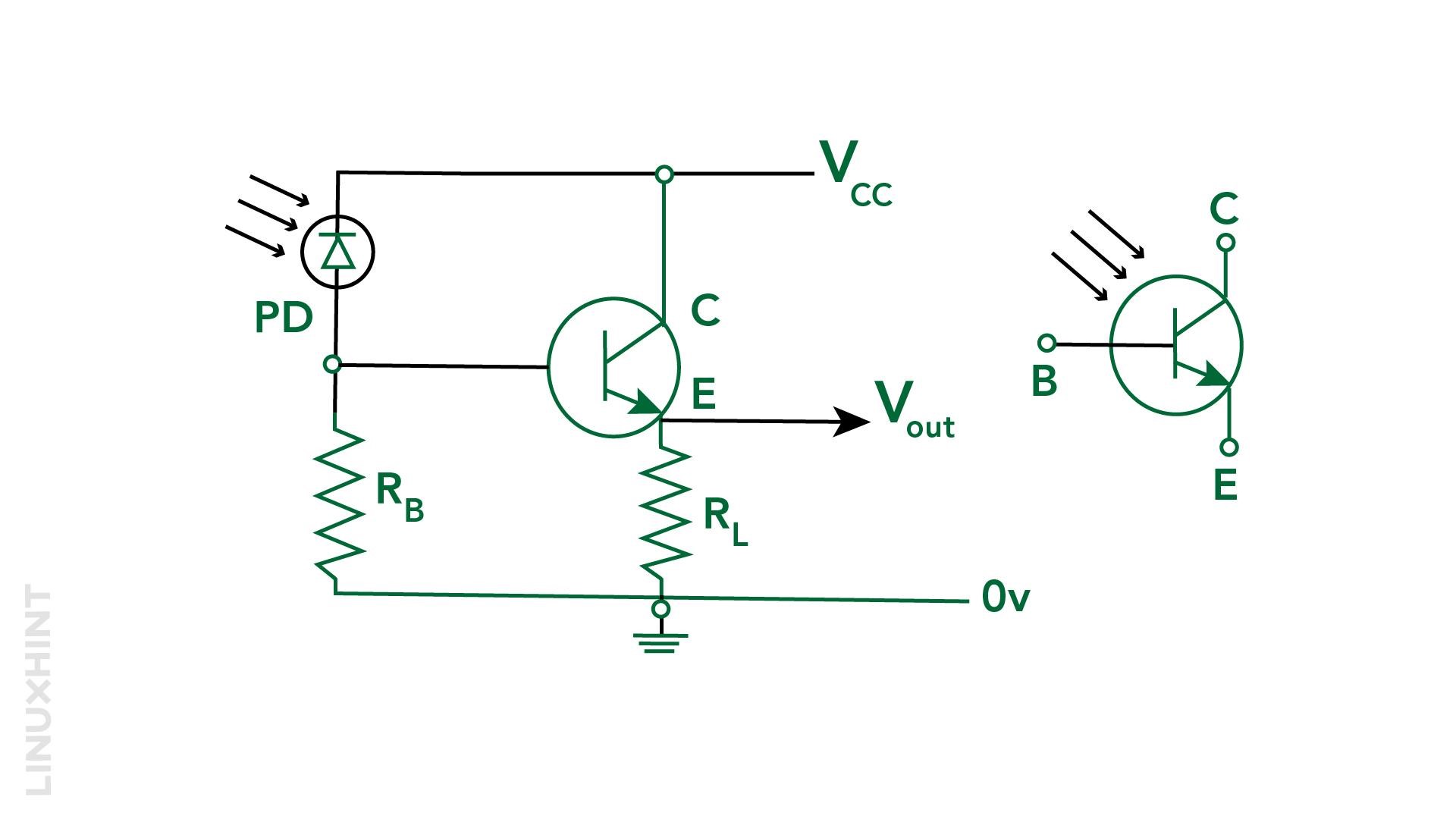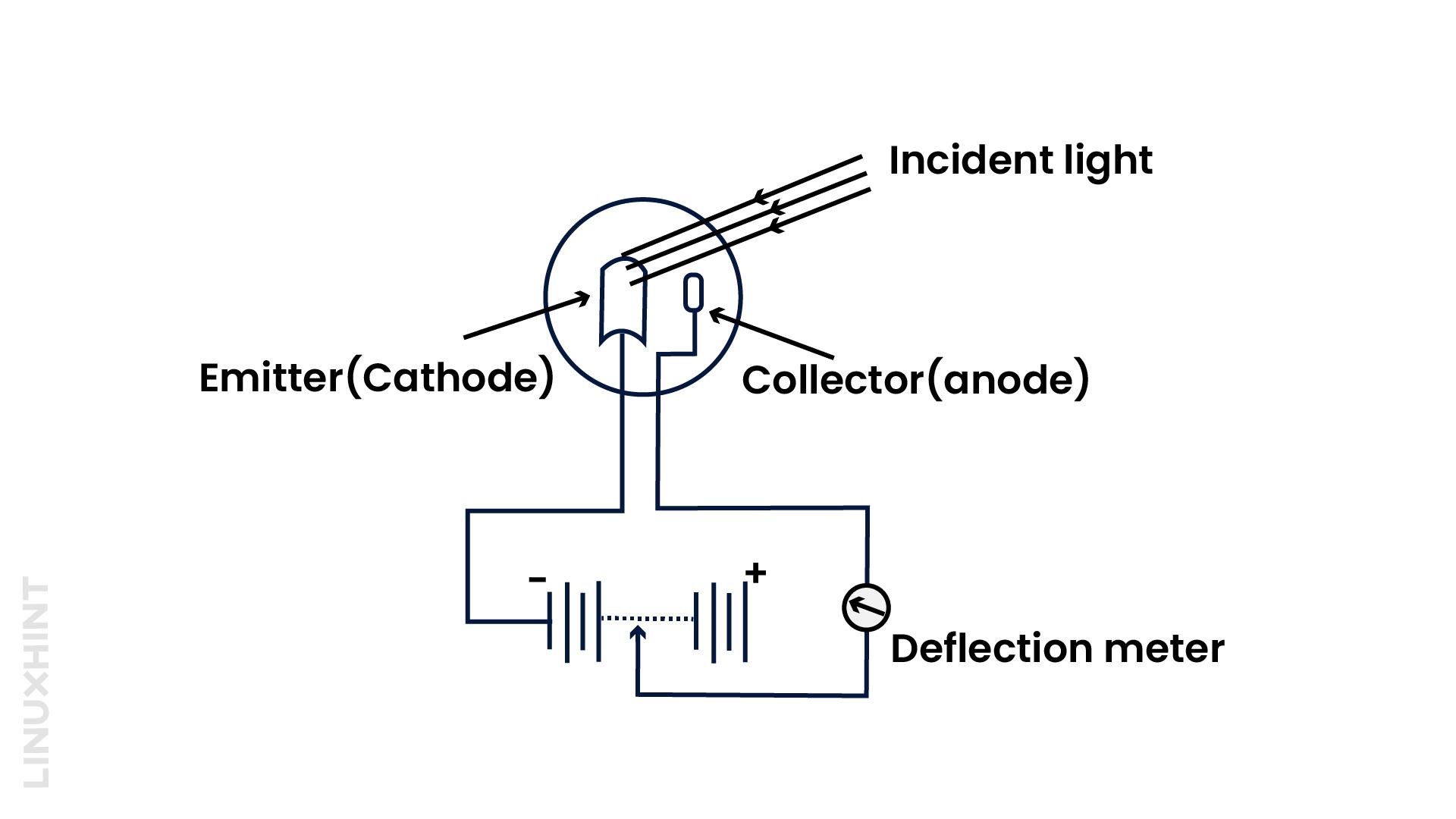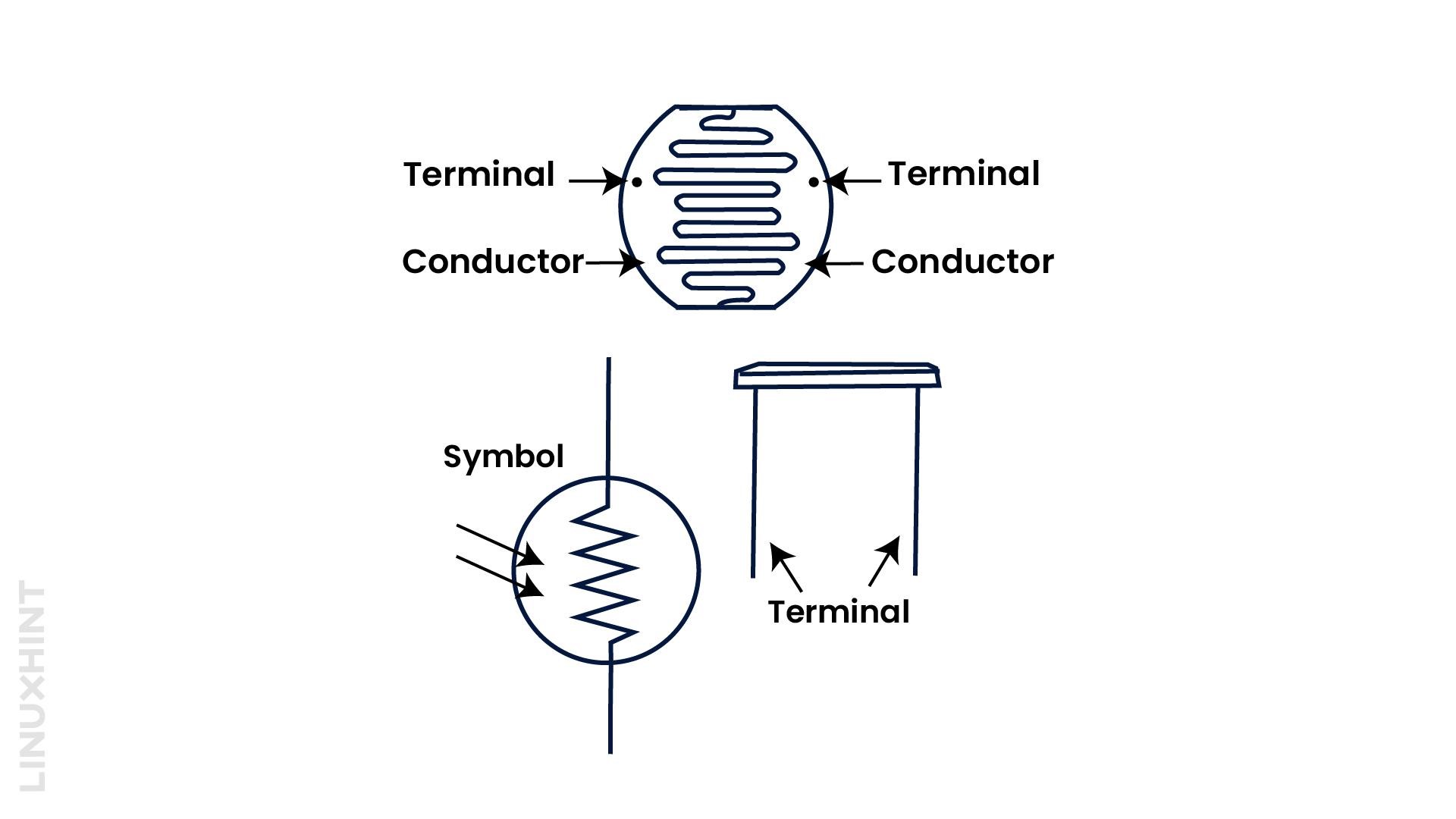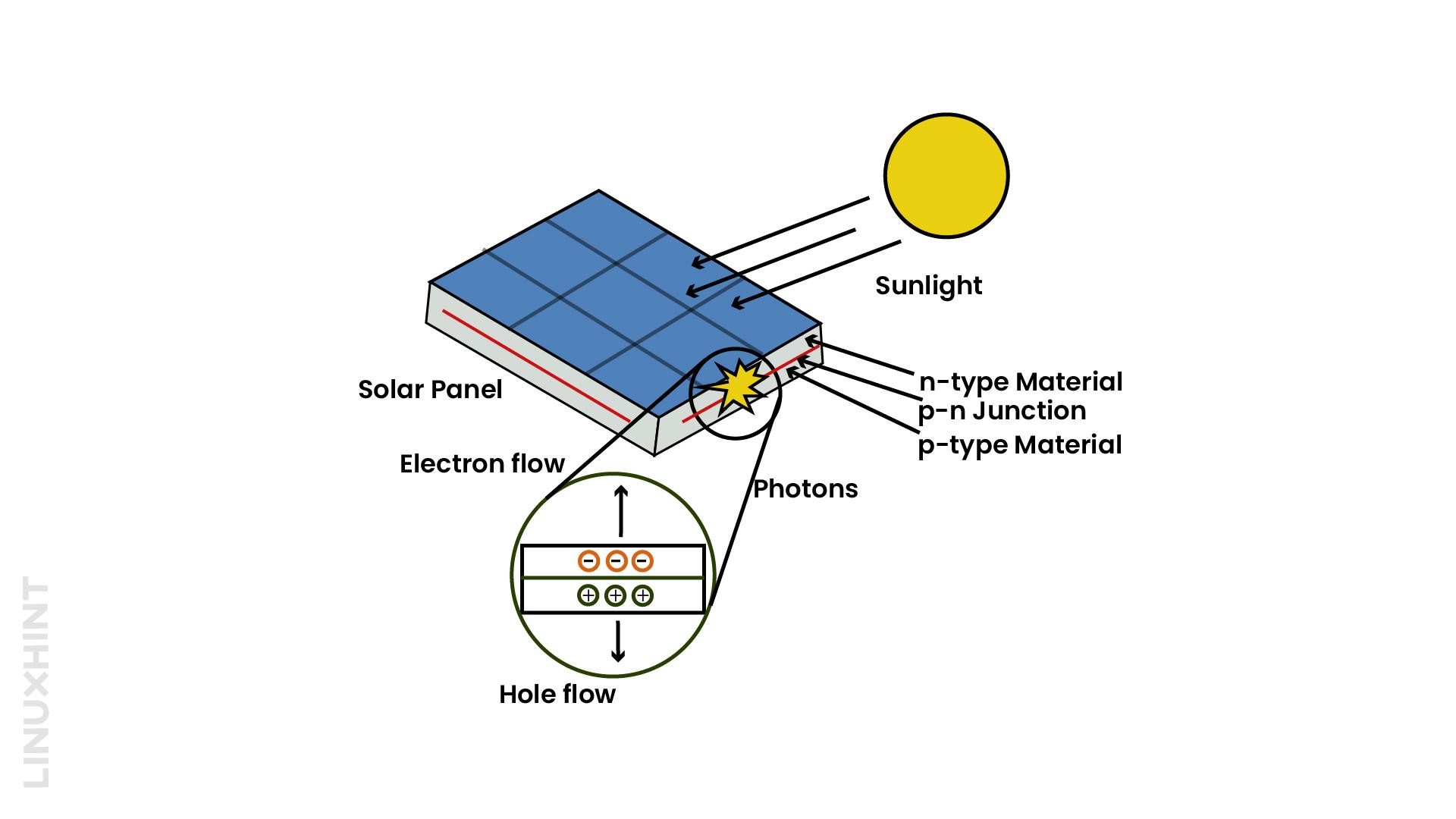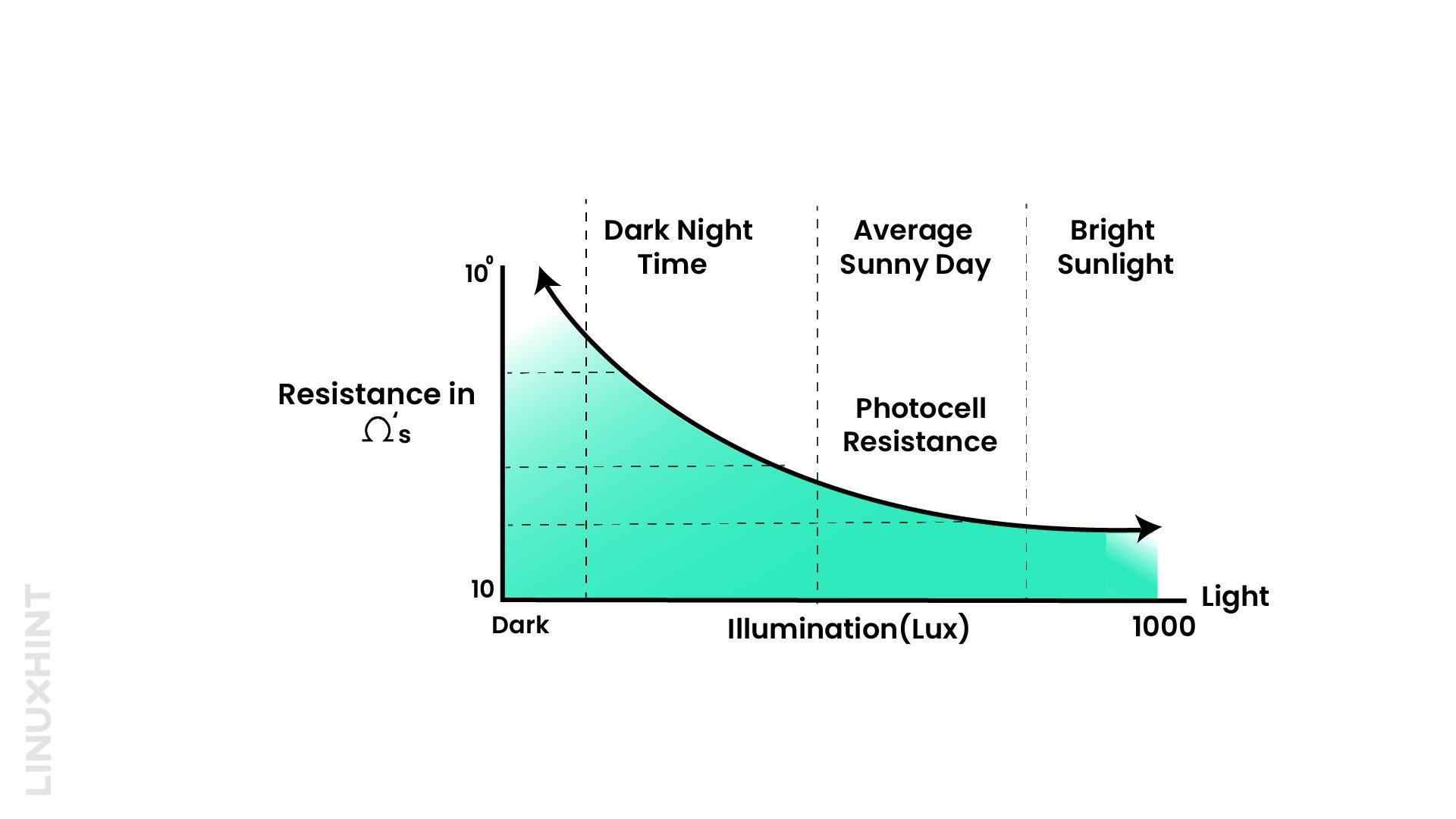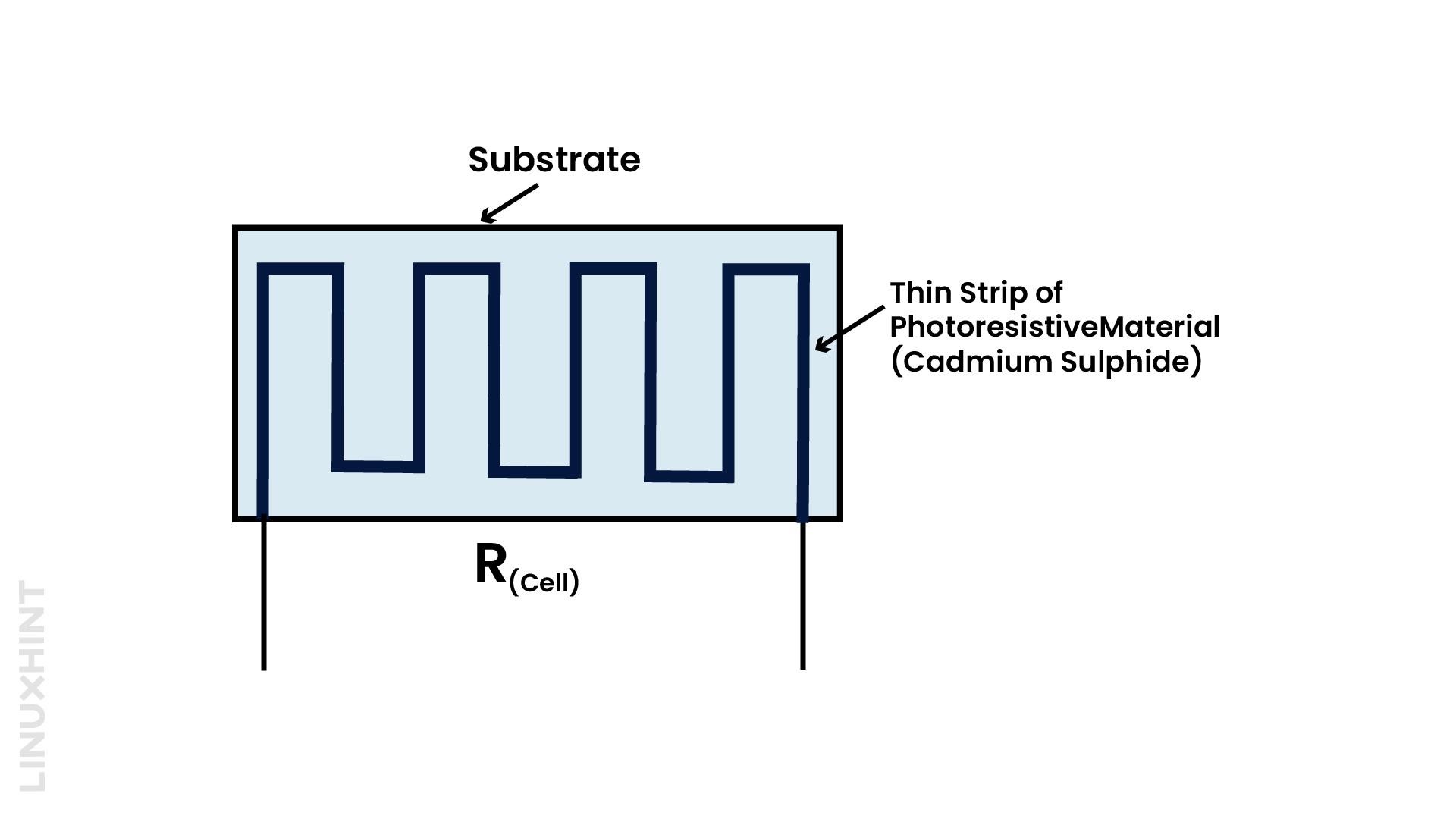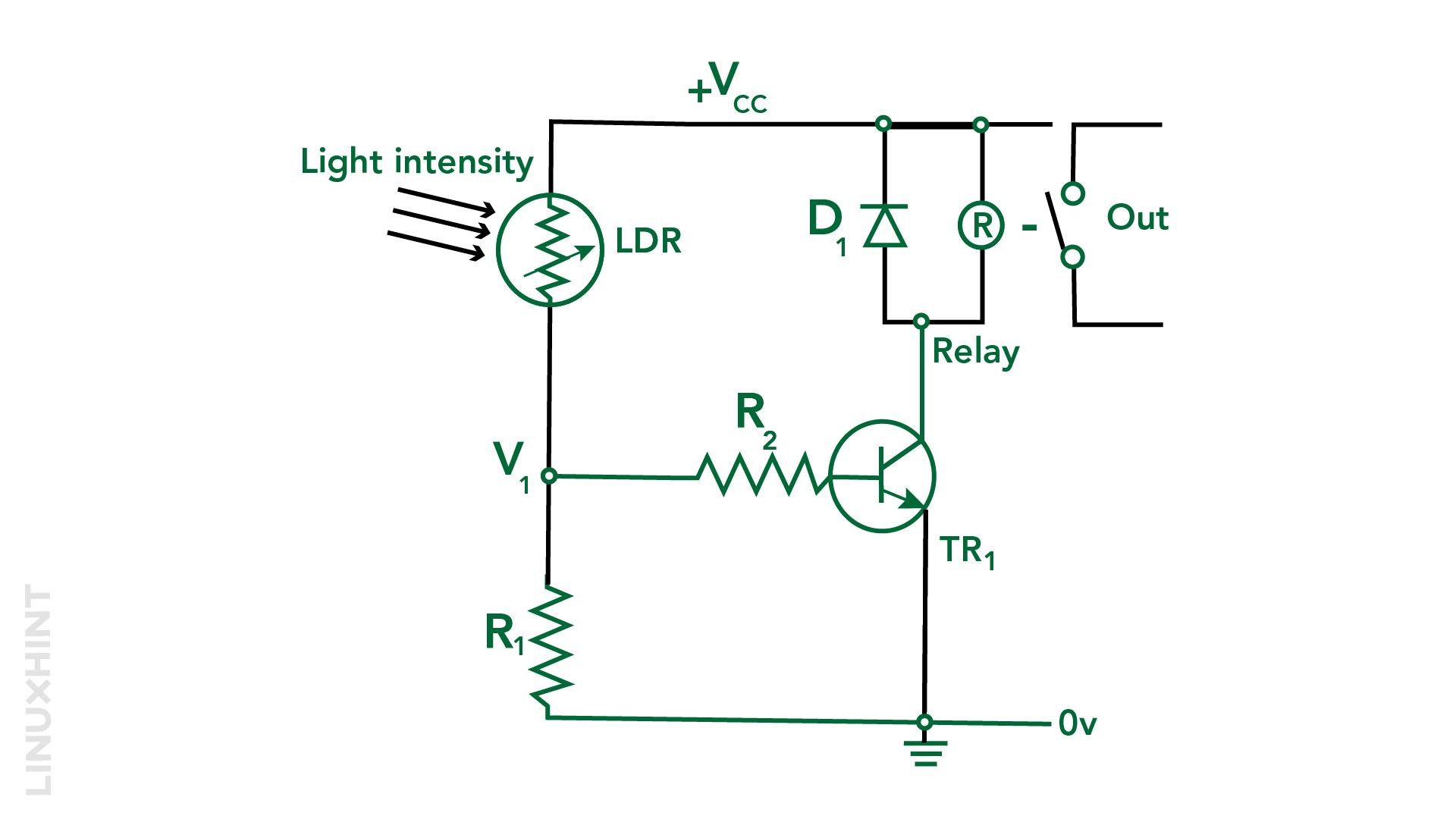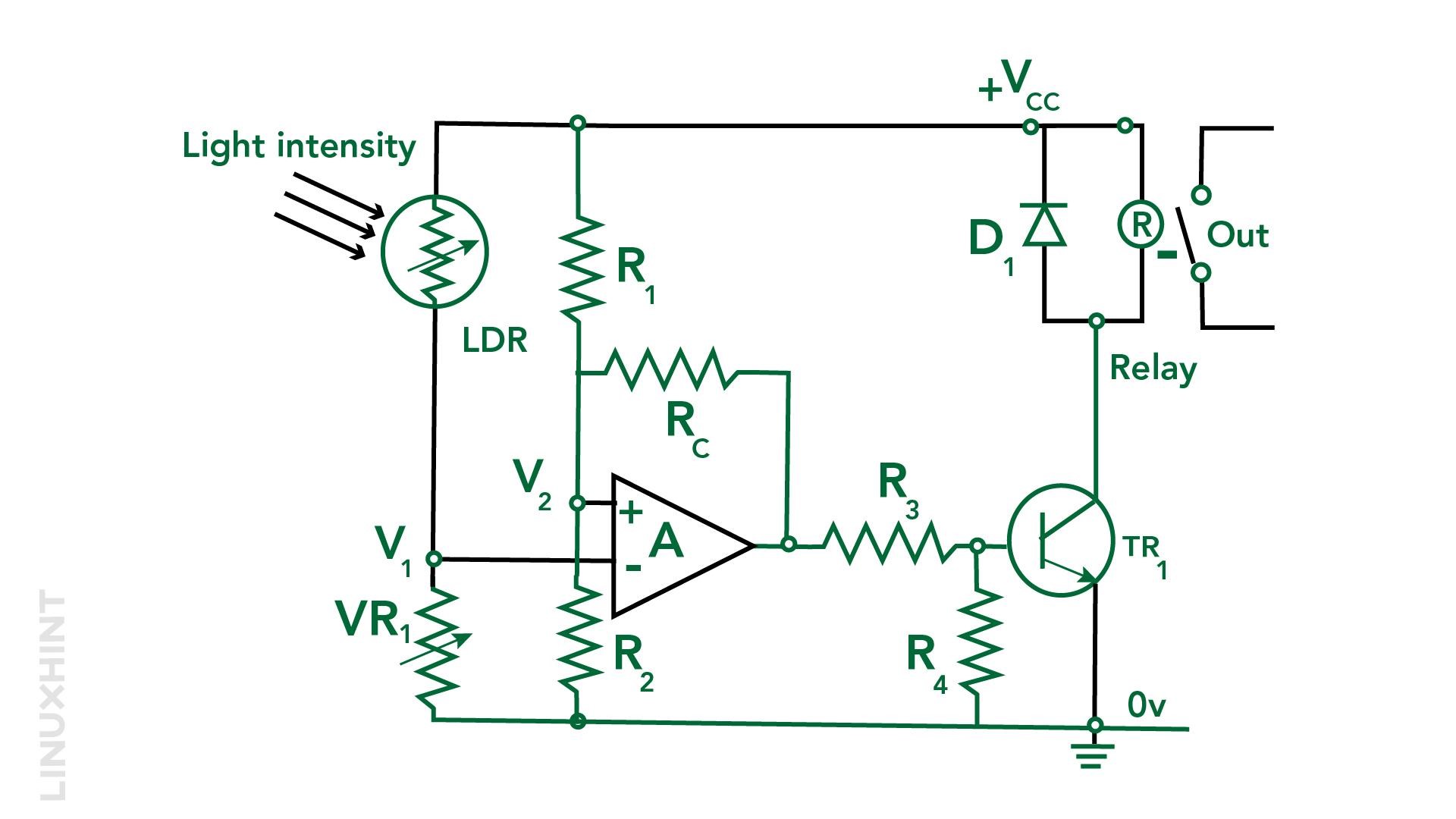Light Sensors including Photocell and LDR Sensor
A light sensor converts light energy into electrical energy and can be considered an NPN Transistor, with the base current dependent on the electrical signal from the light sensor. Light sensors are also called photoelectric devices. The circuit diagram illustrating the above principle is given below:
In the above diagram, a photoelectric device PD has been connected to the base of an NPN transistor. The base current generated from the photoelectric device (PD) is responsible for switching close to the transistor switch.
Classification of Light Sensors
Light sensors can respond to light in a variety of ways. Depending upon the response, light sensors are divided into below types:
1: Photo-Emissive Light Sensors
Photo-emissive light sensors are those which produce free electrons in response to light. The photo emissive light sensor output depends on the frequency of light.
2: Photo Conductive Light Sensors
Photoconductive light sensors change their internal resistances instead of producing electrons when they are exposed to light. These materials are mostly semiconductors whose resistance falls while conductivity increases as soon as the light hits on them.
3: Photovoltaic Cells
Photovoltaic cells are commonly known as solar cells. These cells produce an emf in proportion to the intensity of light falling on them. A photovoltaic cell can produce 0.5V on exposure to light.
4: Photo-junction Cells
These cells are semiconductor-based PN junctions in which positive and negative charge carriers depend on the light to flow across the junction. Photo junction-based light sensors vary the flow of charges with the intensity of light.
Photocell & Light Dependent Resistor
Photocells change their own state in response to light energy. This change occurs mostly in the form of a decrease in resistance as soon as the light hits upon the cells. The movement of charge carriers varies with the exposure level of light.
Photoconductive cells change their own resistances in response to light. Light-dependent resistors are the most common examples of photoconductive cells. Just like electrical resistances, light-dependent resistors can change their physical properties with exposure to light.
Light Dependent Resistors (LDR)
These semiconductor materials have extremely high resistance in an environment without exposure to light. As soon as the light falls, the resistance decreases and more of the electron-hole pairs are generated due to the incoming light energy, resulting in current flow across terminals. This phenomenon is shown through the graphical representation below:
Semiconductor materials in LDR are mostly sulfide compounds with lead, gallium, and indium elements.
Construction of Light Dependent Resistors
Among the semiconductor materials of light-dependent resistors, cadmium sulfide is preferred due to its wavelengths in visible ranges of 560 nm to 600 nm. The construction of this photo-conductive cell consists of a thin strip with a zigzag pattern of semi-conductive material placed in a ceramic substrate enclosure as shown below:
This type of arrangement blocks leakage currents and keeps the resistance of cadmium sulfide at very high levels.
LDR Application as Light Sensitive Switch
A relay operated light sensitive switch can be formed through a potential divider of two resistances, LDR and R1 connected to the relay through an NPN transistor as shown below:
In case of the high impedance of LDR in the dark, no current will flow through the base of the NPN transistor, and the transistor remains in reversed bias or act as an open switch. The relay does not receive any electrical input and therefore remains off.
With exposure to light, LDR resistance starts to decrease until the movement of charge carriers is enough to raise the potential required for forward biasing the NPN transistor. As soon as the forward bias is applied, the NPN transistor acts as a closed switch, and current flows to the relay to energize it.
We can control the forward biasing of NPN transistors in the above arrangement, by changing fixed resistance R1 with variable resistance. By changing resistance from low to high, the movement of current to the base of the transistor can be easily controlled. Therefore, the relay can be energized at a pre-set value of the intensity of light when the current reaches a specific level to bypass resistance R1.
LDR Application as Light Level Switch
The LDR arrangement with variable resistance & NPN transistors can have a drawback of lesser sensitivity to switching points. The external temperature might rise in some cases, which may lead to inaccurate transistor switching for the relay. A more accurate arrangement can be the addition of Wheatstone bridge and relay operations through an op-amp comparator along with transistors, as shown below:
Since an op-amp comparator compares the two voltages and reflects the higher input voltage at the output, the forward bias potential can be set at a particular input in the above arrangement.
One arm of the Wheatstone bridge comprises LDR and variable resistance R1 while the second arm contains fixed resistances R1 and R2 providing a fixed potential V2 for forward biasing the transistor at the non-inverting terminal. The voltage drop V1 with LDR depends on the resistance of LDR, which decreases with the intensity of light.
As soon as the light falls upon LDR, resistance decreases, resulting in a decrease of the voltage drop across it. When voltage drop V1 falls below the level of V2, the input V2 at the non-inverting terminal appears at the output, which forward-biases the transistor and energizes the relay.
The variable resistance R1 here can add or decrease resistance with LDR value, and therefore the voltage drop V1 can be adjusted with the value of R1.
Conclusion
Semiconductor materials used as light sensors react to light in a number of different ways. They can produce an emf, generate induced current, or vary their own internal resistances with the intensity level of light falling on them.

